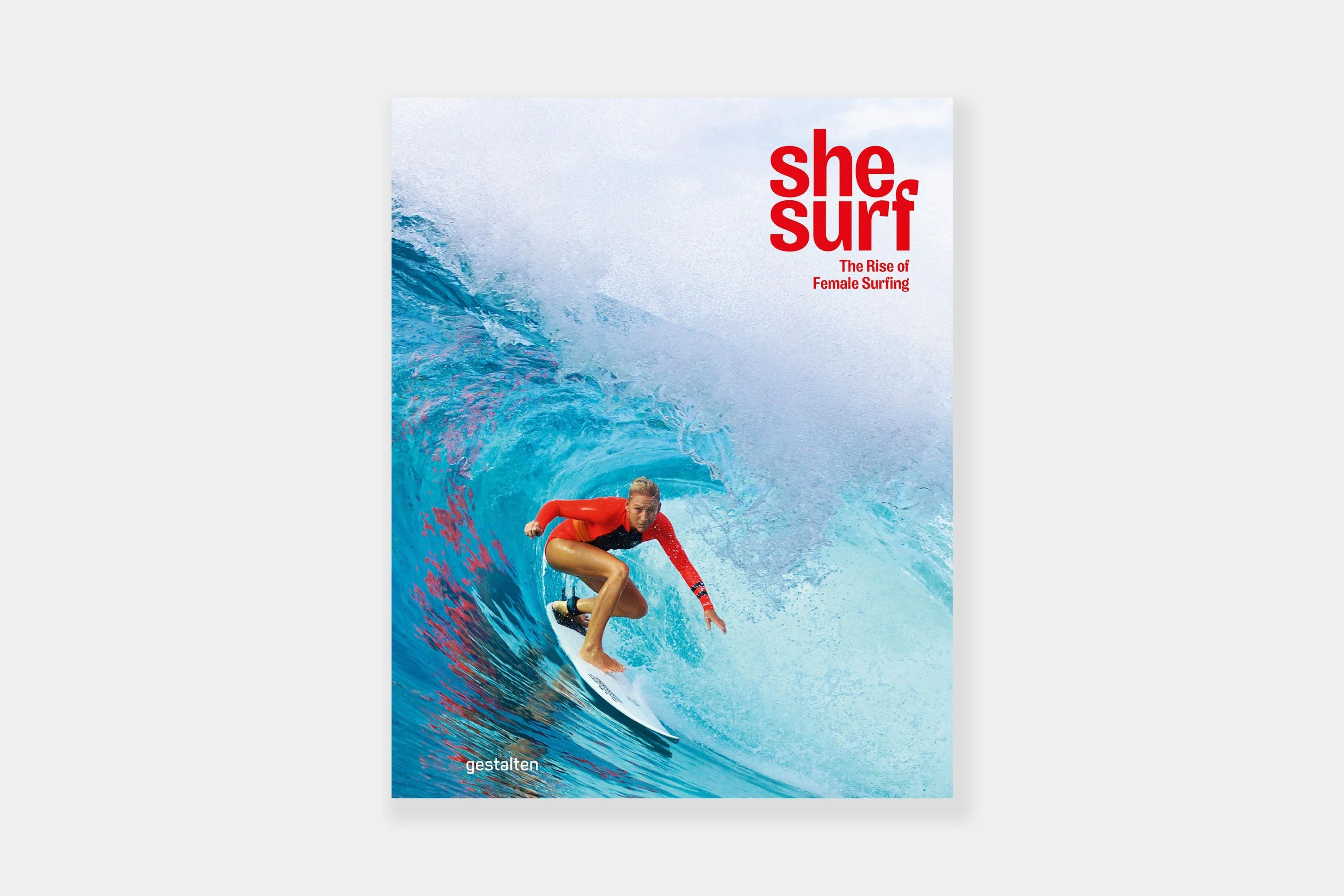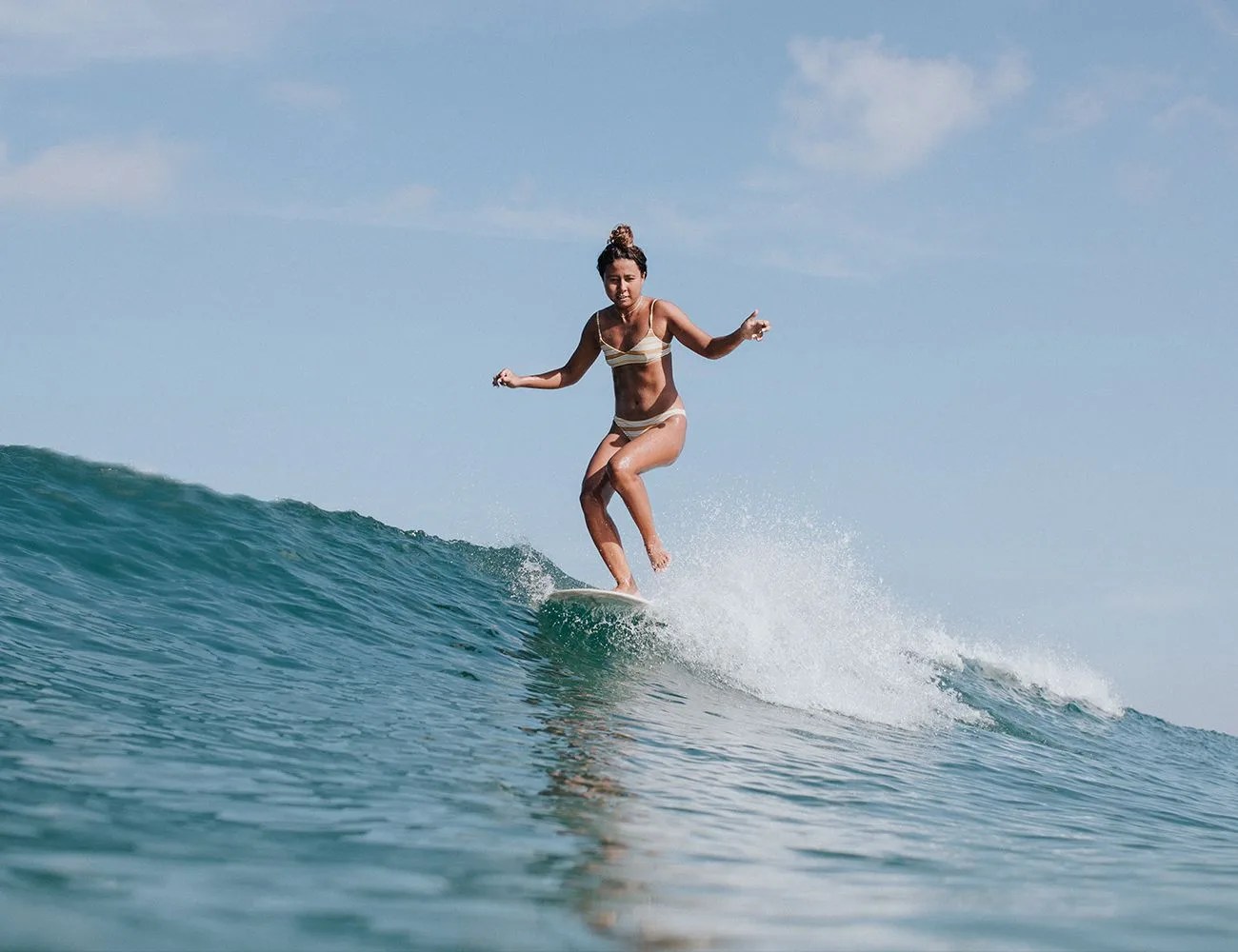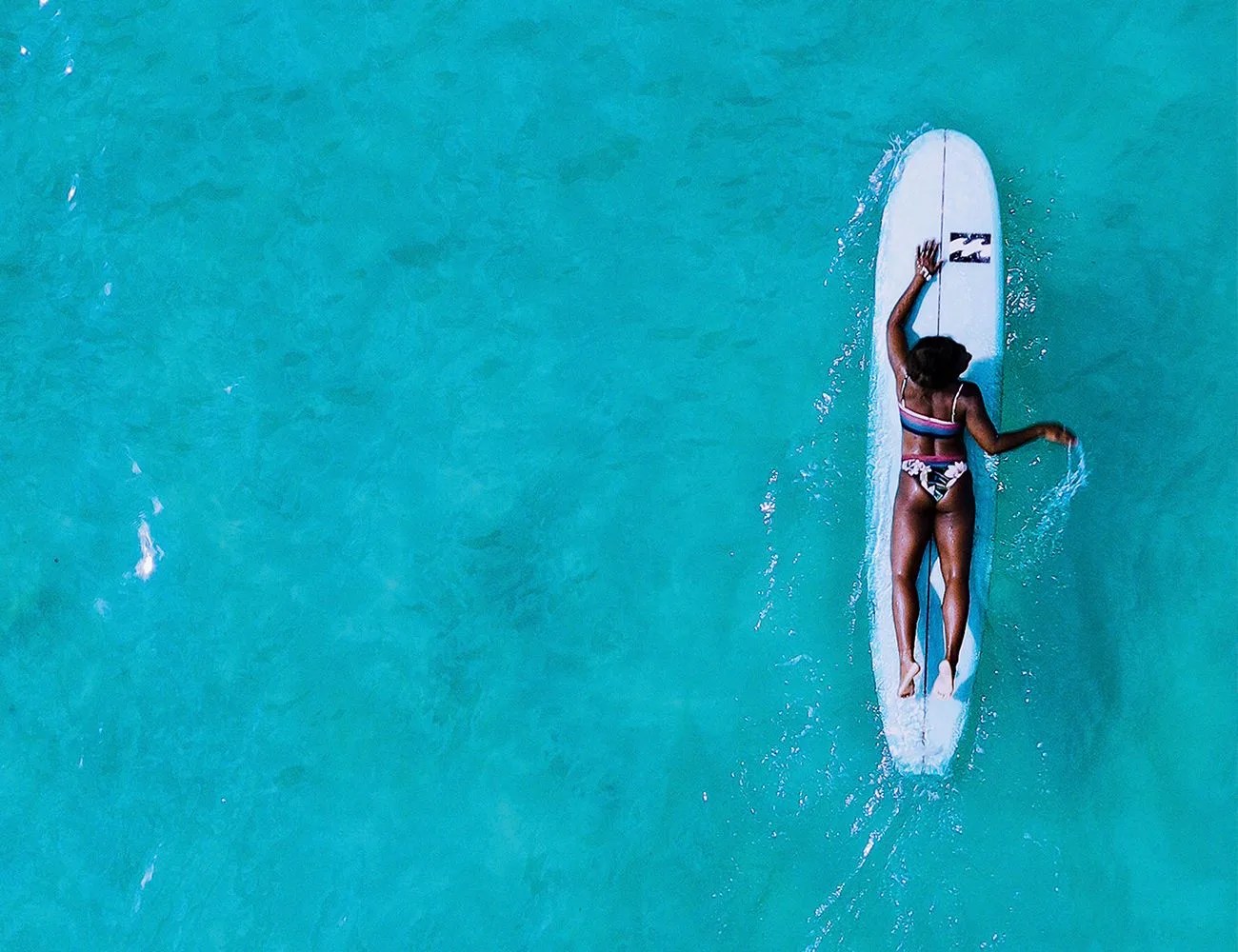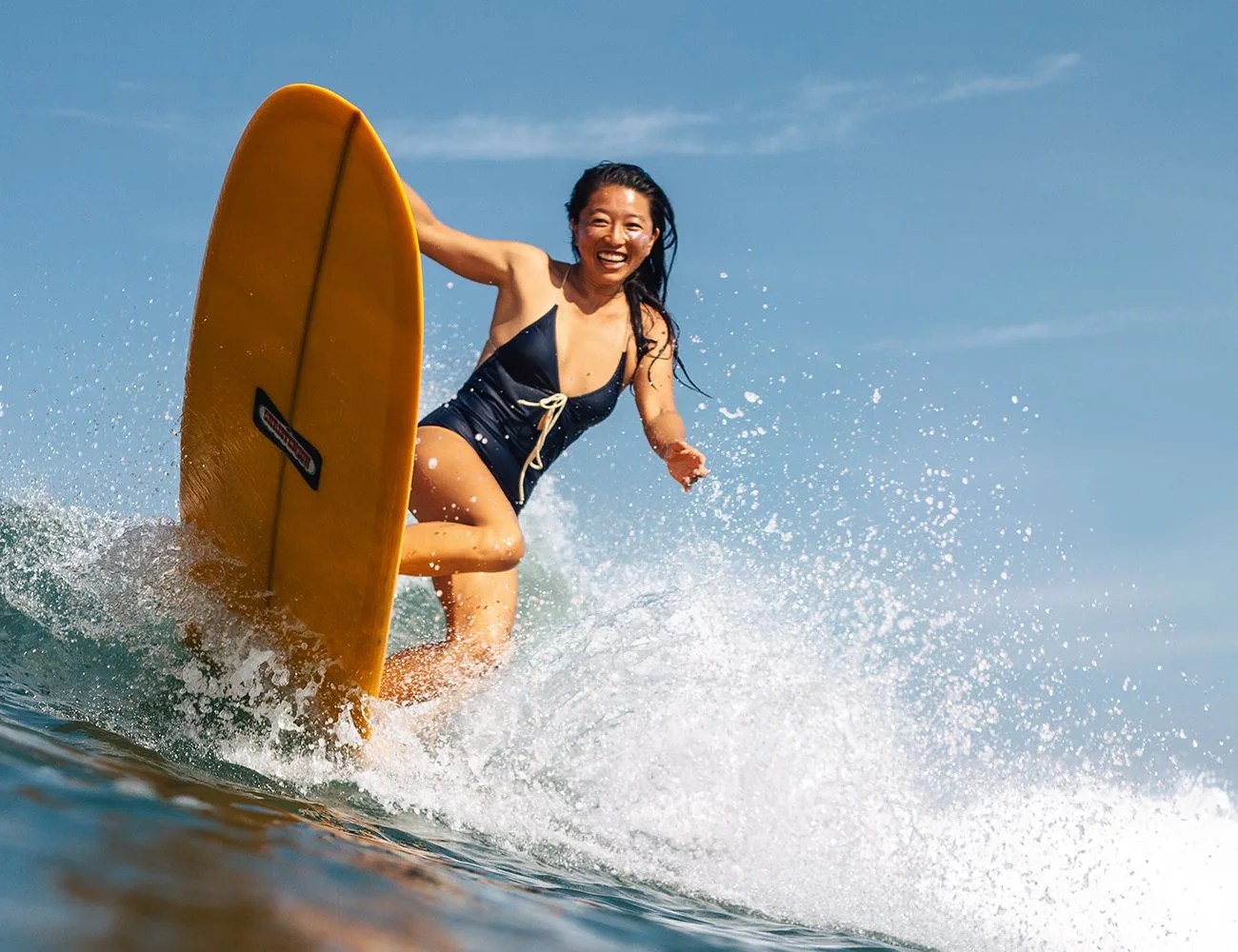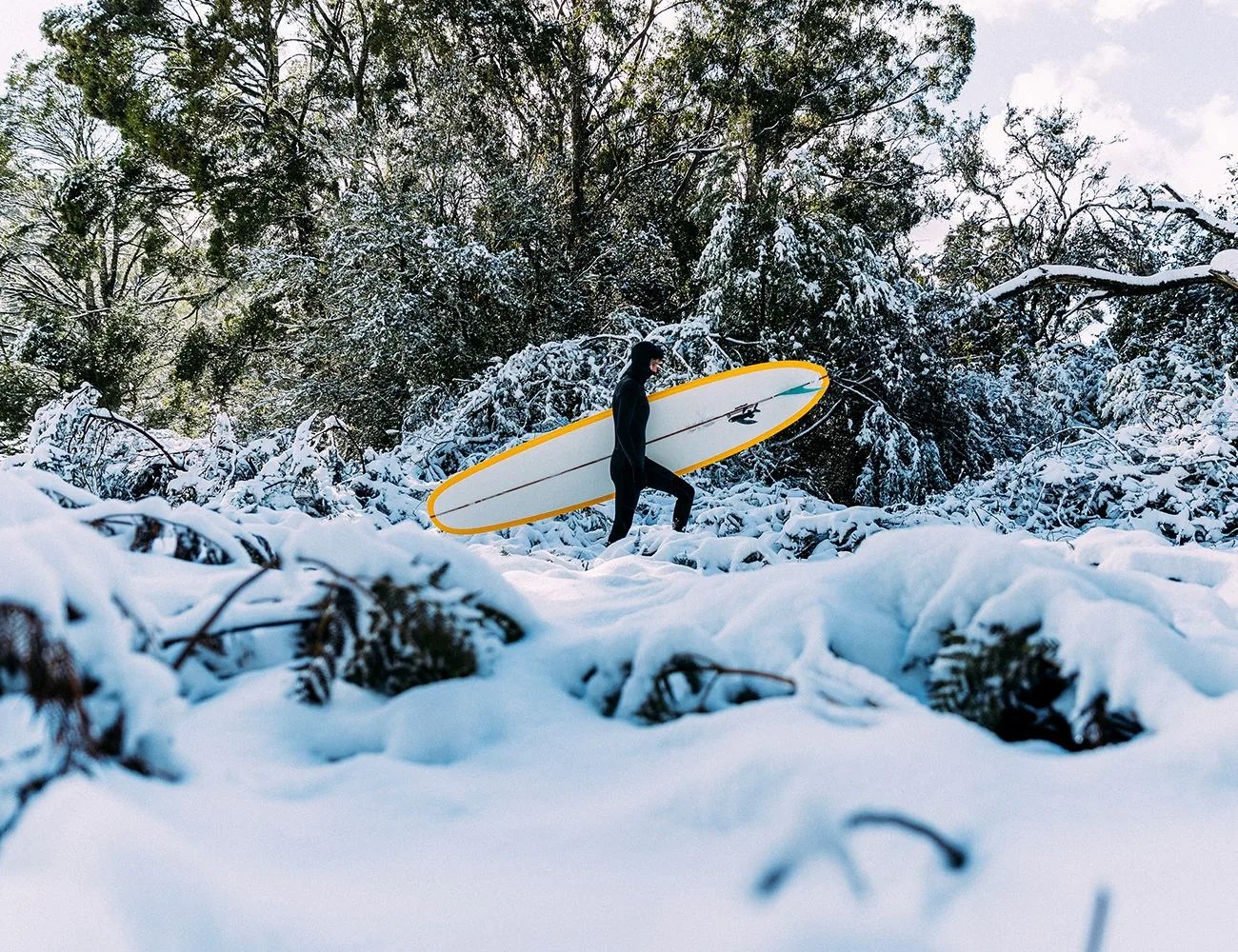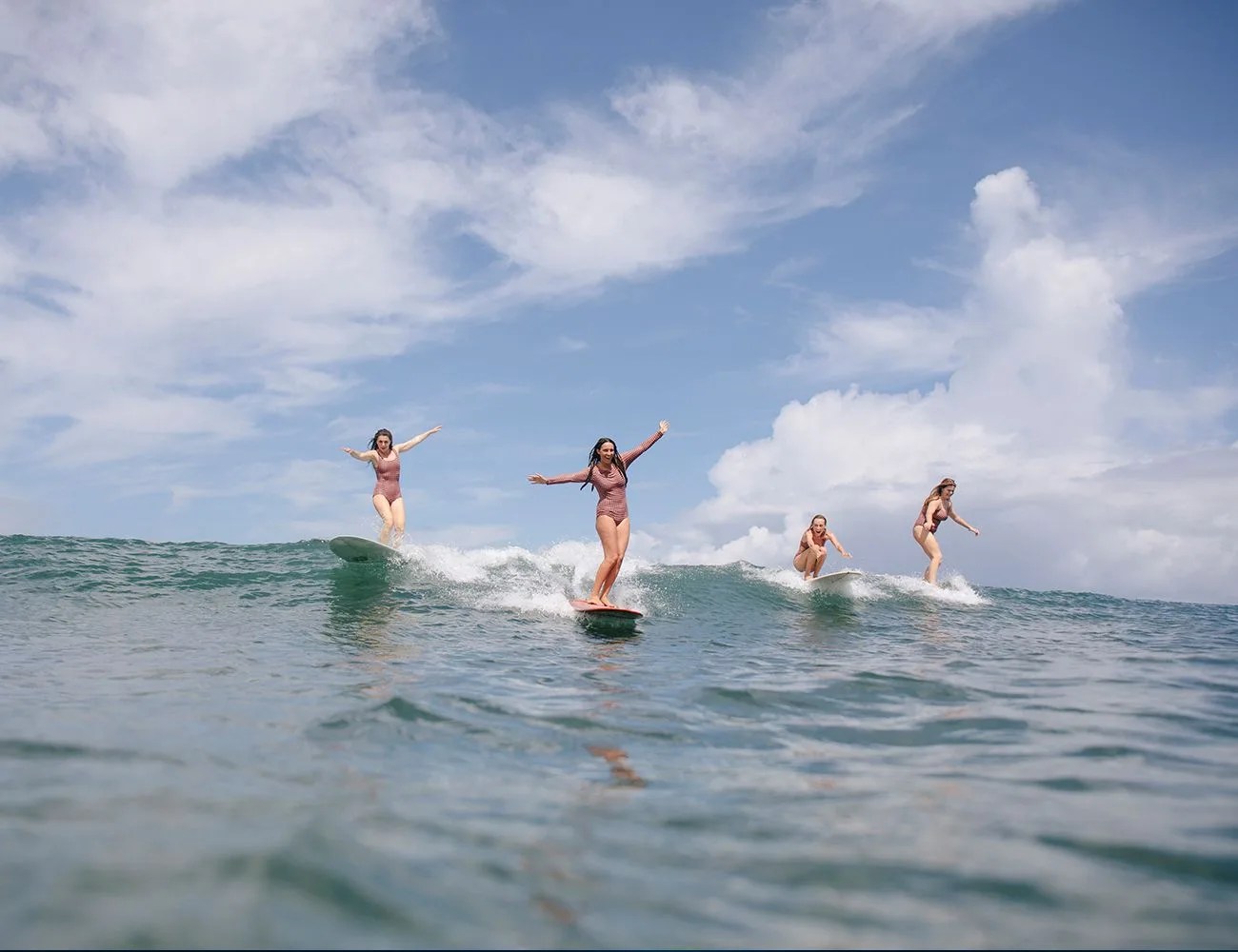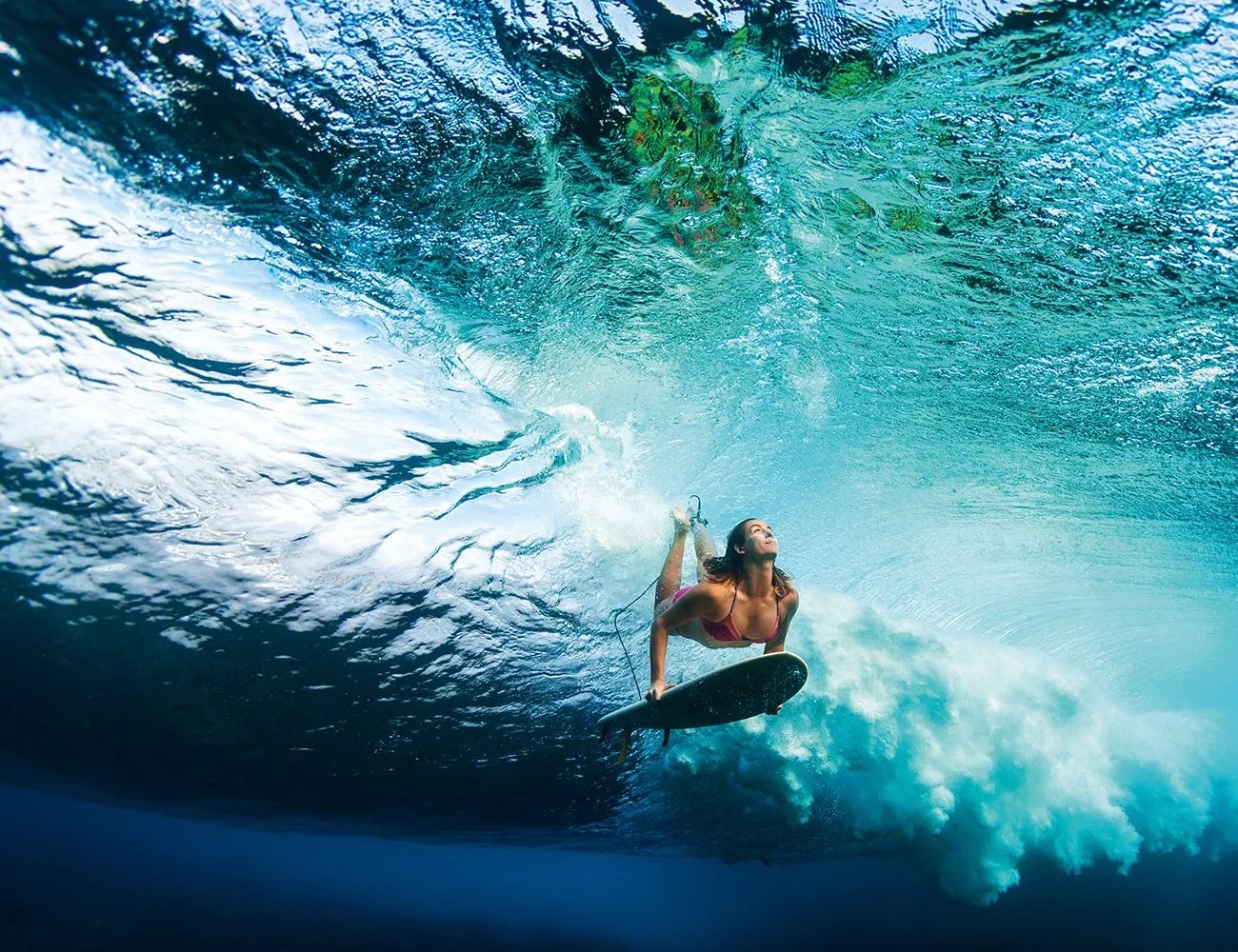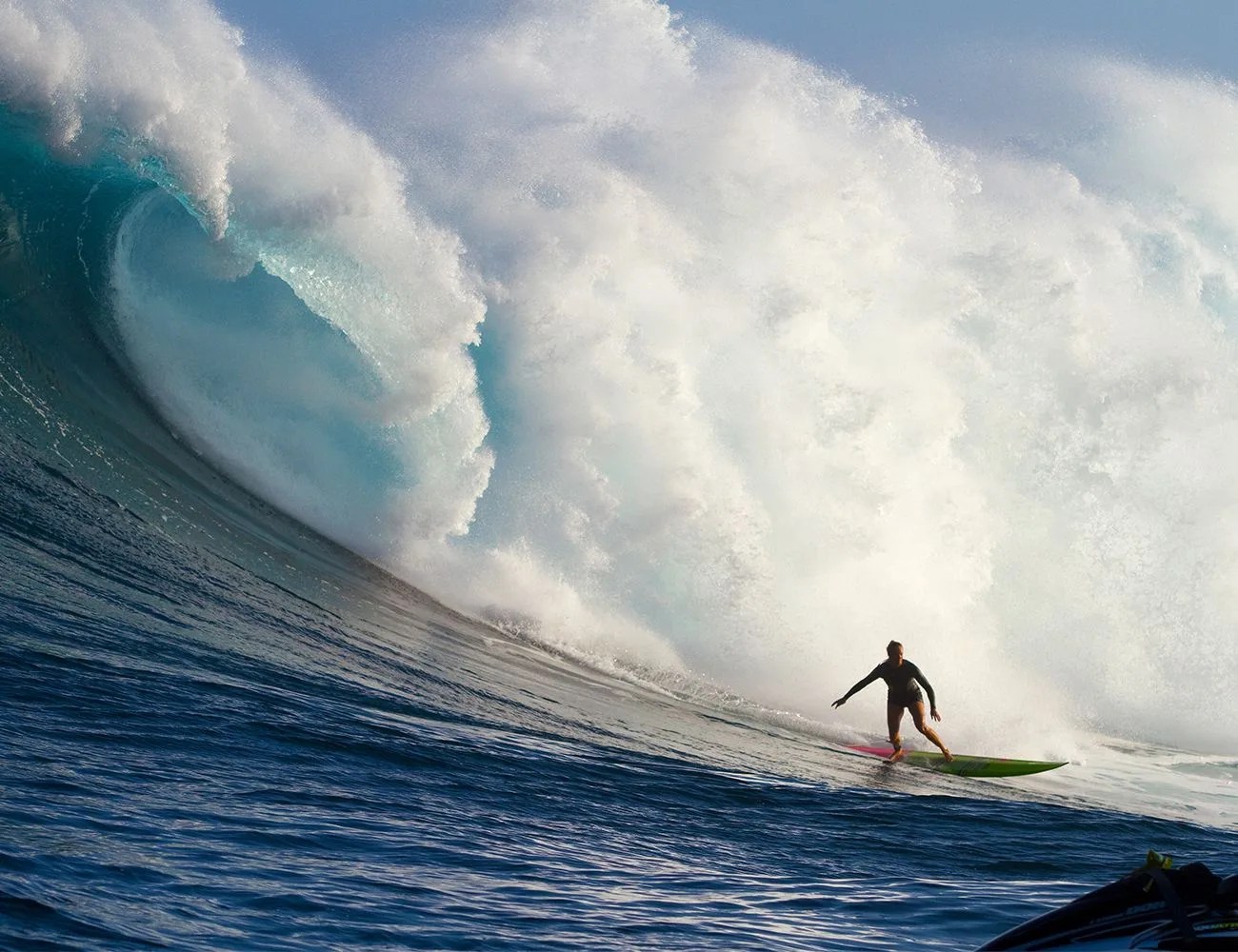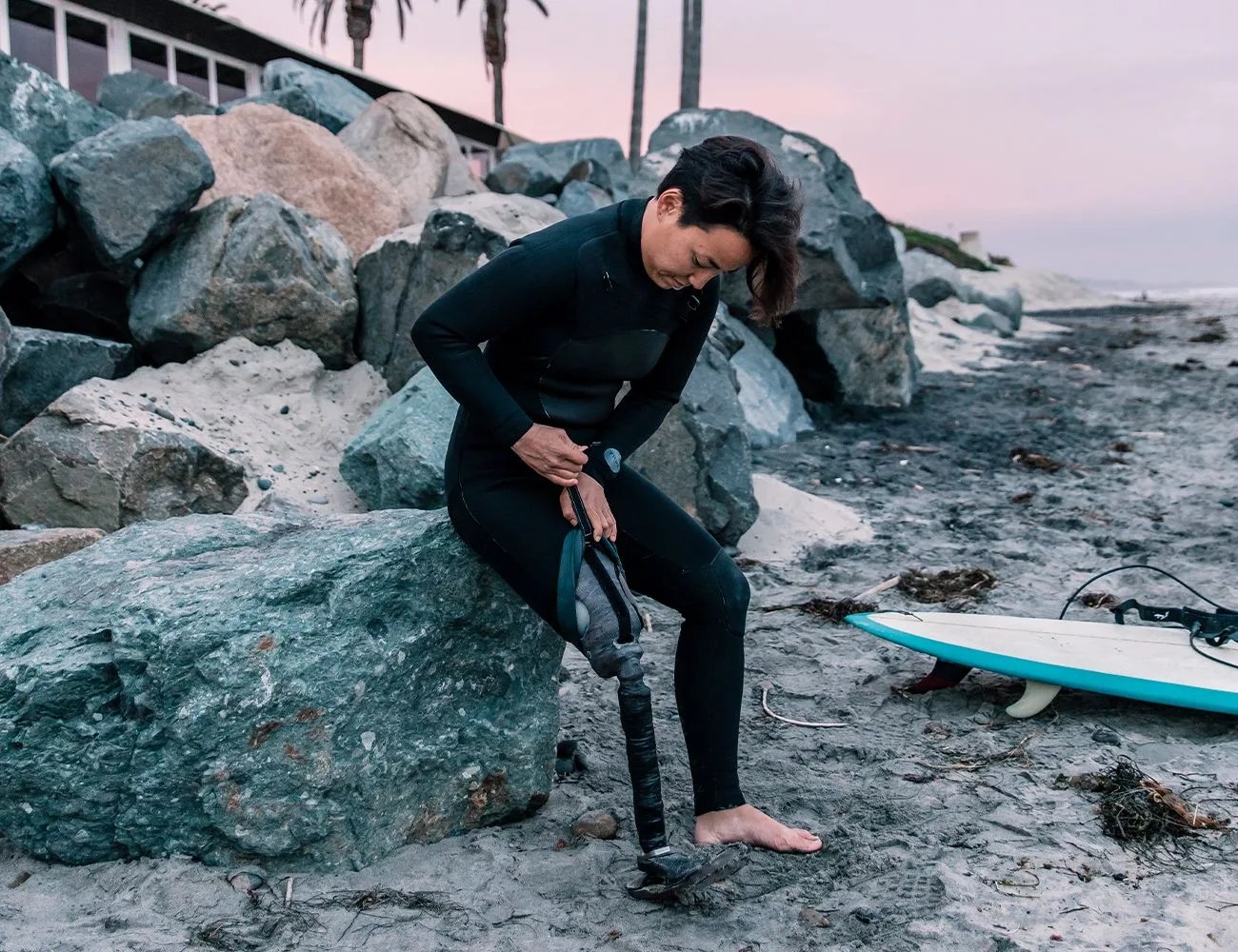Even in the fourth century, wave riding, the earliest form of surfing, was an inclusive sport — men and women of all ages surfed. The same is true today, though you might not know it based on the sizable share of cultural space allotted to men. Kelly Slater, John John Florence, Gerry Lopez — these are some of surfing’s most recognizable names, and the faces that dominate films, magazine stories, news coverage and contest highlights tend to be male (and often white).
In contrast, the representation of women in surfing has been minimized and frequently sexualized. “The progress of dilating the dialogues of mainstream surfing has been slower than many of us hoped,” laments professional surfer Lauren Hill in She Surf: The Rise of Female Surfing. The new book from Berlin-based publisher Gestalten documents women’s participation in the sport through history, shares travel inspiration and profiles of some of today’s most prolific female surfers. Because change is happening, writes Hill:
“In 2019, surfing became one of the first global sports to provide equal pay for women and men at the elite competitive level. While competitive queens like Stephanie Gilmore and young phenoms like Caroline Marks are globally visible womanifestations of the potential for women’s sport in cultures of economic privilege, radical change is also bubbling up from the fields and streets of emerging surf cultures around the globe: India, Sri Lanka, Iran, Morocco, Brazil, Gaza, and more. Women in these countries are not only shaping their local communities and cultures, they are also rewriting the rules of femininity and womanhood, a byproduct of pursuing their passion for slip-sliding across a watery wave face. Looking forward, regionally adapted surfing cultures, guided by fresh perspectives — those of women, indigenous people, and people of color — might reshape the impact of surfing on beaches and communities.
As the sport of surfing is elevated by inclusion in the 2020 Olympics, there’s never been a more important time to elucidate the values and virtues held by the women’s surfing community: sisterhood, the preservation of history, and caring for community, land, and sea.”
She Surf highlights 26 female surfers in its more than 250 photo-filled pages. Here are nine you should know now, before adding the book to the stack on your coffee table.
